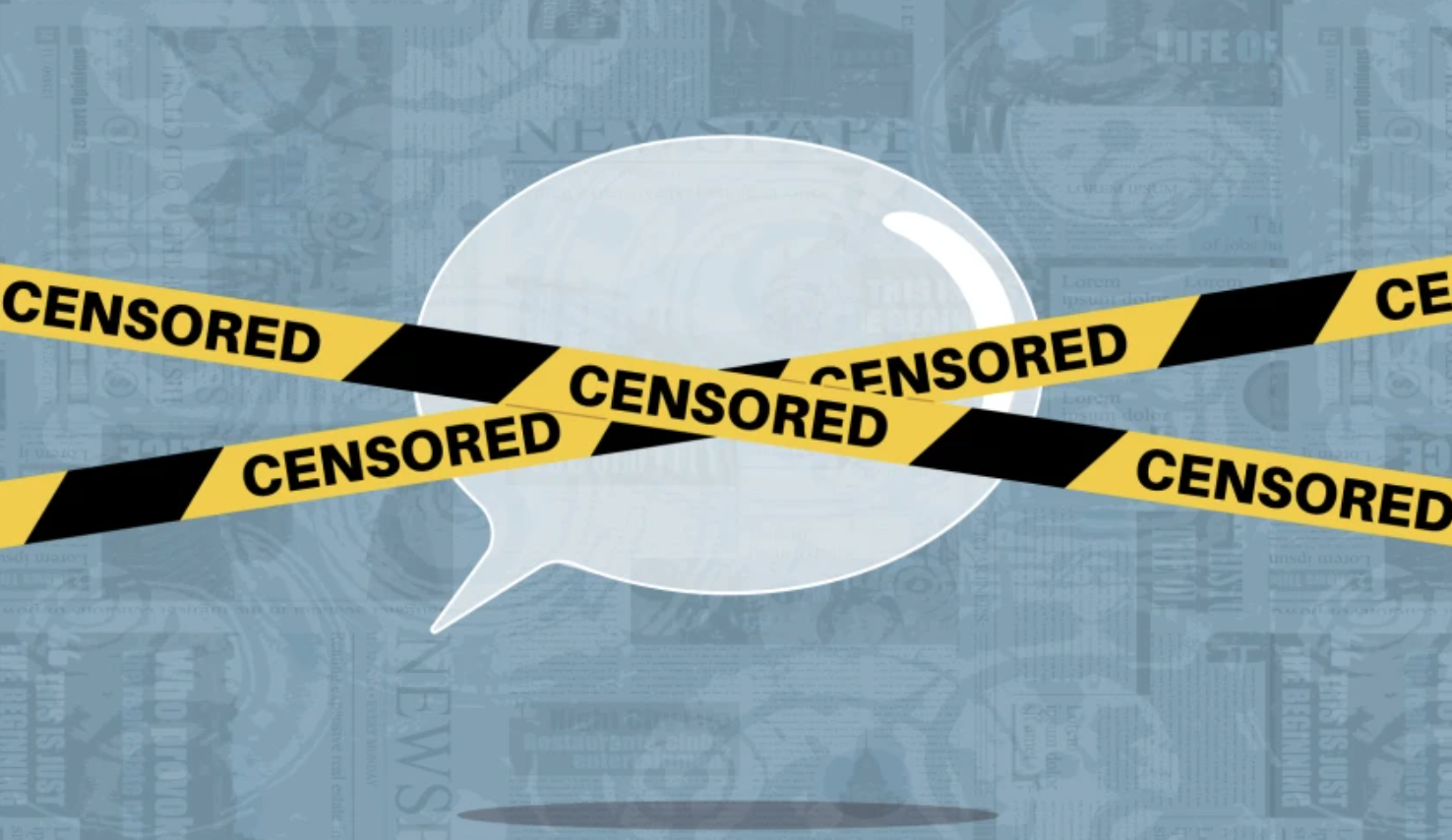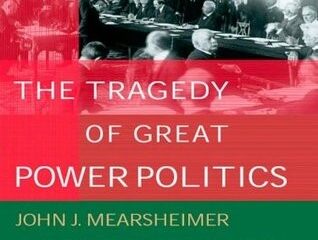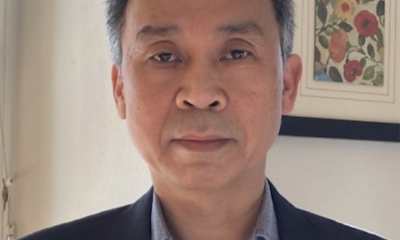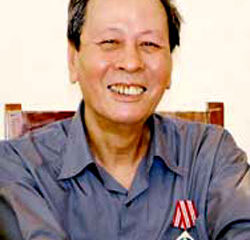After 1975
The Press Plan of 2025 and The Rise of Digital Authoritarianism in Vietnam
Published on
By
Nguyen Huong
Editor’s Note: The following is a study and summary of Vietnam’s press plan for 2025. Minor edits to the original text have been made to adhere to our style guide. The footnotes on this piece was previously removed and reintroduced on 12/25/23.
Introduction
April 3rd, 2019 marks one of the most heavy-handed policy intervention in Vietnam’s mass media since Doi Moi in 1986, when Prime Minister Nguyen Xuan Phuc signed on the “National Press Development and Management Planning until 2025,” which will be referred to from then on as Press Plan 2025 (Quyết định số 362/QĐ-TTg ngày 03/4/2019 của Thủ tướng Chính phủ phê duyệt Quy hoạch phát triển và quản lý báo chí toàn quốc đến năm 2025).[1]
The newly proposed allocation plan aimed to eliminate a minimum of 180 press organizations (approximately 1/5 of the total number of press organizations) and 8,000 jobs, as estimated by the Ministry of Information and Communication (MIC) at that time.(2) One of its primary objectives is to address issues such as “pervasive and overlapped investment, lax management, and instances where certain media units deviate from the established ideology.”([3]
The state-controlled nature of the press in Vietnam is internationally recognized, but the phenomenon of “some media units” deviating from the established direction is less well-known. Since the 2000s, with the advent of the Internet, Vietnamese citizens have observed the rise of prominent online newspapers established by non-governmental entities. These semi-independent media outlets, such as VnExpress and Zing News, have diversified the Vietnamese media landscape over the past two decades. This was made possible by the “loosened management” of an authoritarian government grappling with market forces and unprecedented technological disruptions.
However, that era is coming to an end. The Communist Party of Vietnam (CPV), wielding increased political influence and advanced technological capabilities, is actively working to curtail civic space in Vietnam, with the mainstream media being a primary focus.[4] Commencing with the Press Plan 2025, the party has initiated an ambitious campaign to firmly reassert control over the media landscape. This essay aims to offer a detailed examination of the recent policies designed to achieve this objective.
Background: The diversification of press
The shift towards commercialization, stemming from economic reforms, has introduced subtleties into Vietnam’s state-owned media system beyond common perceptions. Despite initial intentions to utilize the press primarily for party propaganda, the financial burden of subsidies has led the government to encourage self-sufficiency within the press. Among the three main categories based on political affiliation—namely, the party’s press, government units’ press, and associations’ press—the party’s press is given priority in receiving subsidies. Simultaneously, various press entities linked to government units and associations have entered the market and undergone commercialization.[5]
The government’s acceptance of commercialization in the press has paved the way for private entities to enter the news industry, giving rise to “quasi-private” press organizations. As media companies cannot directly obtain press licenses, they “lease” them through various arrangements from official bodies while maintaining editorial independence.
In print media, Sunflower Media Group pioneered this model, producing popular lifestyle magazines registered as advertising products under various associations’ newspapers.[6] This approach also facilitated the operation of franchised magazines in Vietnam. For instance, Forbes Vietnam, introduced in 2013, is a specialized publication of the Culture Newspaper, officially managed by the Ministry of Culture, Sports, and Tourism. However, Forbes’ editorial content operates independently.[7]
This market-driven approach extended into the internet era, growing in impact and scale, posing challenges for the government. Since its launch in 2001 by FPT Corporation, VnExpress has consistently ranked among the most-read online newspapers in Vietnam. Initially operating under a general information website license, it successfully obtained an online newspaper license, opening the door for private participation in internet media.[8] Following VnExpress, platforms like Zing (by VNG Corporation), 24h (by 24h Online Advertising JSC), Soha, Kenh 14 (by VCCorp), and others entered the scene, vying for readers and advertising revenue through news production.
In the recent online news landscape of Vietnam, quasi-private online newspapers have outpaced official ones in readership. For instance, in 2019, before the implementation of Press Plan 2025, six out of the top ten most-read news sites, as tracked by SimilarWeb, were owned or associated with private media companies. These six websites accounted for 73% of the total traffic generated by the top ten, as detailed in the table below.
Table 1: Top 10 news websites in Vietnam by traffic, 2019.
| Ranking | Online media | Related company | Proportion of traffic |
| 1 | VNExpress | FPT Corporation | 20% |
| 2 | 24h | 24h Online Advertising JSC | 17% |
| 3 | Kenh14 | VCCorp | 14% |
| 4 | Zing News | VNG Corporation | 14% |
| 5 | Dan Tri | N/A | 10% |
| 6 | Vietnamnet | N/A | 8% |
| 7 | Soha.vn | VCCorp | 5% |
| 8 | Tuoi Tre | N/A | 5% |
| 9 | Thanh Nien | N/A | 4% |
| 10 | CafeF | VCCorp | 4% |
Data Source: Pageviews of Top 10 News websites from June – August, 2019, tracked by SimilarWeb.com.
The intersection of market dynamics and technological advancements has left authorities in a state of uncertainty, rendering management tactics from the print media era outdated. The Ministry of Information and Communications (MIC) has made distinctions between publishing licenses for press and general information websites, with the latter confined to republishing content from official sources.[9] Nevertheless, monitoring the vast and growing number of internet websites with anonymous ownership has proven to be an insurmountable task. Driven by consumer demand, these unofficial media outlets not only provide independent news coverage but also engage with political subjects. The prevalence of political news consumption through quasi-private press among the Vietnamese public signifies a media landscape that has expanded beyond state regulation.
Confronted with this evolving landscape, the government has decided to take decisive measures. The flourishing of online media with significant private involvement may undergo transformation with the introduction of new regulatory hurdles. The Press Plan 2025, incorporating quotas for press agencies, the prohibition of “newspaperization,” and the eagerness to establish state-media conglomerates, reflects the determination of an authoritarian government to eliminate deviations in the system.
The forthcoming analysis will elucidate how these changes specifically target the two catalysts of quasi-private press in Vietnam. Firstly, the broad authority of social organizations and local government departments to establish press agencies and outsource press licenses. Secondly, the authorization granted to enterprises to create “general information websites,” facilitating their entry into the news industry.
Press Plan 2025: Quotas of press agencies
The Press Plan 2025 aims to restructure the press system by reducing the number of organizations eligible to have press agencies and imposing rigid quotas. While the goal is presented as optimizing the press system and its resources, the reduction in organizations is not based on the performance of newspapers but is instead a top-down decision.
In summary, only organizations at the national level are eligible to have press agencies. Provincial organizations are no longer eligible, except for units affiliated with the Communist Party of Vietnam (CPV). There are four types of organizations that can have press agencies, and each is limited to having only one. According to the new plan, there will be approximately one hundred press agencies in Vietnam.
- Party’s Central Committee (1) and provincial party units (63)
- Office of National Assembly, Supreme People’s Procuracy, Supreme People’s Court, Supreme Court, State Audit (4)
- Ministries (18) and organizations of equal level (4)
- National political-social organizations and some special associations (10)
The new policy document has removed the rights to have press agencies of (1) local government organs (2) provincial political-social organizations (3) social organizations and (4) religious organizations. These organizations are eligible to have press agencies according to the Press Law (2016), but now are degraded to only be able to have “magazine agencies” – a term that does not exist in the Press Law. The decision not only results in excessive regulation but also introduces new concepts. The table below provides a comparison between the Press Law and the Press Plan 2025 in terms of media ownership criteria.
| Organizations | Press Law | Press Plan 2025 |
| National party units | Press agencies | Press agencies |
| Provincial party units | Press agencies | Press agencies |
| Courts and National Assembly | Press agencies | Press agencies |
| Ministries and equal level | Press agencies | Press agencies |
| Local government organs | Press agencies | No press or magazine agencies (except for Ha Noi and Ho Chi Minh city can have five each) |
| Political-socio organizations – national level | Press agencies | Press organizations |
| Political-socio organizations – local level | Press agencies | Only magazine organizations |
| Social & Social-Professional organizations – national level | Press agencies | Only magazine organizations (except for Press Association and Writers Association) |
| Social & Social-Professional organizations – local level | Press agencies | Only magazine agencies |
| Religion organization – central level | Press agencies | Only magazine agencies |
| Religion organization – provincial level | Press agencies | Only magazine agencies |
| State-owned companies | Press agencies | Magazine agencies |
After three years in effect, in 2021, the Ministry of Information and Communications (MIC) reported completing the first phase of the allocation plan, with all national organizations and half of the provinces reallocating their press agencies. During this process, some notable newspapers lost their press licenses (such as Zing News and Doanh nhan Sai Gon), while others struggled to find a new governing body to maintain their press status (Phap Luat HCMC had to change its governing body from the HCMC Justice Department to the city government).
Based on these outcomes, another comprehensive planning scheme with a vision for 2030 is set to be issued to “strengthen the mainstream of information.”[10] The party-state is reasserting complete control over the press system.
Magazine license and the monopoly of news making
In the Vietnamese government’s approach to press management, the act of newsmaking is considered an exclusive privilege reserved solely for registered newspapers. Any other entities attempting to engage in this activity may be deemed illegal. The monopoly of newsmaking is evident in the hierarchical structure of licenses, which consists of four levels:
- Press license allows full functioning as a newspaper. This is exclusive for the few types of organizations mentioned above.
- Magazine license allows reporting in specific field, decided by the field of the governing agencies (termed as “mission” in its license). When it comes to political news, these types of magazines can only recite from official newspapers. Violation of this rule is interpreted as exceeding the mission which can lead to fines or worse, license strip off.
- General information websites (or news aggregators) only allow reciting from newspapers and magazines, no information production allowed.
- Social media platforms only allow user-generated content on non-political matters.
No media outlet comprehends this challenging situation better than Zing News. Initially established as an entertainment website owned by VNG, Zing obtained a press license around 2013/14 through the Vietnam Publishing Association, becoming one of the most widely read online media platforms in the country. However, in 2020, under the effective Press Plan, the Publishing Association was no longer authorized to have press agencies. Consequently, Zing’s press license was converted into a magazine license.[11] This change in status meant that Zing could no longer cover political news and topics. The newly configured Zing had no alternative but to concentrate on publication news, aligning with the specialization of its governing agency. This compelled one of the most dynamic media production teams in Vietnam to either cease their news coverage or do so at the risk of losing their organizational status.
The Illegalization of “newspaperization”
While the regulations explicitly state that private companies can operate news aggregators but are prohibited from producing news content themselves, this seemingly impractical rule has not deterred private entities from finding ways to enter the newsmaking arena. They legitimize this practice by borrowing content from other newspapers, citing them in bylines. This strategy is commonly known as “source washing,” and it is how the quasi-private press has emerged within Vietnam’s press system. This ambiguous zone remained unaddressed by the government until 2017 when the Chief of the Propaganda Commission at the time, Vo Van Thuong, began denouncing the practice as “newspaperization” and initiated a campaign to eliminate it.[12] This term has since been consistently highlighted in every annual monitoring event by the Ministry of Information and Communications (MIC) as one of the main issues to be addressed.
In July 2022, the MIC issued the first official definition of this phenomenon through Decision No. 1418 titled “Identification criteria of newspaperization of magazines, information websites, social media platforms and signs of privatization of the press.”[13] This guide aims to facilitate the inspection of news websites with lower licenses masquerading as online newspapers by outlining detailed signs, including web layout, content, reporting behavior, and organizational structure. It also delineates various tactics employed by media companies to legitimize their content publishing. Here is how the guide explains the “source washing” tactic:
“In terms of technical:
– The website produces the news as a press agency, then pass to the online newspaper which they borrow the source to publish first, then the website republishes immediately to officialize the source.” (MIC’s Decision No. 1418, July 2022)
In summary, all the tactics that facilitated the existence of quasi-private press in Vietnam have been rendered illegal. With the new policy document serving as the legal basis, extensive inspections have been conducted throughout the press system. As of October 2022, approximately thirty organizations have faced fines or warnings for “exceeding their function,” and the Ministry of Information and Communications’ campaign remains ongoing.[14] Zing News was also among the media outlets penalized in July 2023.[15] Concurrently, discussions have arisen regarding the necessity of amending the Press Law of 2016 to incorporate the new definitions of “magazine” and “newspaperization.”[16]
State-media conglomerates and the rise of digital authoritarianism
As it systematically streamlines non-traditional media outlets and reduces the number of agencies in the press system, the party-state is concentrating resources on strengthening six national media conglomerates. These conglomerates comprise Nhân Dân Newspaper (Vietnam Communist Party), Quân đội Nhân dân (People’s Army – Ministry of Defense), Công an Nhân Dân (People’s Public Security – Ministry of Public Security), Vietnam Television (VTV), Vietnam Radio (VOV), and Vietnam News Agency. This strategic shift was initially outlined in the Press Plan 2025, and the process has been consistently advanced.
The digitalization of these six organizations is a key focus to ensure the state retains control in the online information landscape. Previously, entities like VnExpress or Zing could negotiate their positions in the press system due to technological innovations. However, this advantage has diminished as the party is modernizing its platforms. For instance, the Communist Party of Vietnam’s Nhân Dân Newspaper, traditionally considered an outdated platform for propaganda, is now on TikTok with over 530 thousand followers and five million likes.[17] This move signals the party’s willingness to adapt to engage with the young and digitally savvy public.
The press reallocation is part of the Vietnamese government’s ambitious plan to “purify content on the internet.”(18) Utilizing content tracking tools for years to monitor online newspapers and social media, they plan to invest more in this practice.[19] These social listening tools can alert authorities to discussions against the state’s interests, prompting corrective actions. They also have the capability to trace down the authors of posts for punishment if deemed necessary.[20]
Conclusion
In summary, the government is reclaiming control over the information environment in Vietnam through a multifaceted approach: rectifying private participation in the media, reallocating the press organization system, fostering an atmosphere of fear in the press and social media to encourage self-censorship, and establishing state-owned multimedia conglomerates with a prominent digital presence. Supported by strong political determination and technological capabilities, the state’s plan is designed to ensure that any push for media pluralization faces significant challenges.
Drawing inspiration from China, the ongoing overhaul of Vietnam’s press system could enhance the state’s legitimacy in two specific ways. Firstly, commercialized media can act as extended tools of the propaganda machine. With a uniform information flow in political matters, Vietnam’s scenario may resemble what Daniela Stockmann describes as ‘propaganda for sale’ in China. In this competitive environment to disseminate propaganda, commercialized media could be more effective, given their closer proximity to audiences.
Secondly, the state-media’s adoption of new social media platforms like TikTok can enhance their popularity among the younger public. This situation echoes a phenomenon observed in China, where generations growing up in the era of digital authoritarianism “aren’t even interested in what they can’t see” and become increasingly pro-Chinese Communist Party. With political discourse stifled by the arrest of activists and media suppression, Vietnamese state-media conglomerates are positioned to gain the trust of younger generations as legitimate sources of information.
Notes:
- Full text of the decision can be accessed here on the website of the Communist Party of Vietnam: https://tulieuvankien.dangcongsan.vn/he-thong-van-ban/van-ban-quy-pham-phap-luat/quyet-dinh-so-362qd-ttg-ngay-0342019-cua-thu-tuong-chinh-phu-phe-duyet-quy-hoach-phat-trien-va-quan-ly-bao-chi-toan-quoc-den-5312.
- Nguyễn Hoài. 2019. Đến năm 2025: Giảm 180 cơ quan báo chí. Tienphong.vn. July 6, 2019. https://web.archive.org/web/20221230233557/https://tienphong.vn/den-nam-2025-giam-180-co-quan-bao-chi-post1122508.tpo.
- Press Plan 2025.
- Nguyen Khac Giang and Dien Nguyen An Luong – ISEAS-Yusof Ishak Institute. 2023. 2023/47 “What Drives Vietnam’s Tightened Public Sphere?”. June 19, 2023. ISEAS-Yusof Ishak Institute. https://www.iseas.edu.sg/articles-commentaries/iseas-perspective/2023-47-what-drives-vietnams-tightened-public-sphere-by-nguyen-khac-giang-and-dien-nguyen-an-luong/.
- According to the Ministry of Information and Communication in 2018, there are 300/857 press organizations (around one-third) have become partly or fully self-sustained. Source: Nguoilambao.Vn (2019, February 15). Báo chí trước bài toán tự chủ. https://nguoilambao.vn/bao-chi-truoc-bai-toan-tu-chu
- These include Thế giới Văn hóa (Culture World), Tiếp thị và Gia đình (Advertisement and Family), two of the most popular lifestyle magazine in Vietnam in the 2000s.
- The license information is stated at Forbes website’s footer: https://forbes.vn/. The footer reads: Electronic Newspaper License No. 422/GP-BTTTT issued by the Ministry of Information & Communications on August 19, 2016. Special electronic page of Van Hoa Online Newspaper.
- The story of VnExpress told by its founder Thang Duc Thang can be found here: “Xây dựng VnExpress từ số 0.” 2017. Chungta. December 2, 2017. https://web.archive.org/web/20211127111233/https://chungta.vn/nguoi-fpt/xay-dung-vnexpress-tu-so-0-1116725.html
- Vietnam’s Press Law 2016, Article 36.
- Mai Hà. 2023. Hoàn thiện quy hoạch báo chí trong tháng 6. thanhnien.vn. May 5, 2023. https://thanhnien.vn/hoan-thien-quy-hoach-bao-chi-trong-thang-6-185230505003214457.htm
- Hiền Minh. 2020. Zing.vn và 18 tờ báo khác sẽ không còn được là “báo” nữa. Luật Khoa Tạp Chí. March 3, 2020. https://www.luatkhoa.com/2020/03/zing-vn-va-18-to-bao-khac-se-khong-con-duoc-la-bao-nua/.
- Thắng Đức. 2017. “10 vấn đề tồn tại, hạn chế chủ yếu của báo chí – Báo Công an Nhân dân điện tử.” Báo Công an Nhân Dân Điện Tử, December 26, 2017. https://cand.com.vn/Su-kien-Binh-luan-thoi-su/10-van-de-ton-tai-han-che-chu-yeu-cua-bao-chi-i459587/.
- MIC. 2022. “Tiêu Chí Nhận Diện ‘Báo Hoá’ Tạp Chí, Trang TTĐT Tổng Hợp, Mạng Xã Hội và Biểu Hiện ‘Tư Nhân Hoá’ Báo Chí.” Bộ Thông Tin Và Truyền Thông. https://mic.gov.vn/mic_2020/Pages/TinTuc/154300/Tieu-chi-nhan-dien–bao-hoa–tap-chi–trang-TTdT-tong-hop–mang-xa-hoi-va-bieu-hien–tu-nhan-hoa–bao-chi.html.
- Vietnamnet, 2022. “MIC deals with privatization of newspapers.” VietNamNet News. https://vietnamnet.vn/en/mic-deals-with-privatization-of-newspapers-2068149.html.
- VietNamNet News. 2023. Zing News bị tước giấy phép 3 tháng, phạt 243,5 triệu đồng. VietNamNet News, July 14, 2023. https://vietnamnet.vn/zing-news-bi-tuoc-giay-phep-3-thang-phat-243-5-trieu-dong-2165209.html.
- Tạp chí Tuyên giáo, 2022. “Cơ Sở Khoa Học Và Thực Tiễn Sửa Đổi Luật Báo Chí 2016 | Tạp Chí Tuyên Giáo.” https://tuyengiao.vn/van-hoa-xa-hoi/van-hoa/co-so-khoa-hoc-va-thuc-tien-sua-doi-luat-bao-chi-2016-145320.
- https://www.tiktok.com/@baonhandan?lang=en. TikTok has almost 40 million users in Vietnam and Gen Z users account for more than 60%. Read more at Data Reporta’s Report: Digital Vietnam 2022, https://datareportal.com/reports/digital-2022-vietnam.
- B.T.L. 2023. “Làm ‘sạch’ nội dung trên không gian mạng.” https://nld.com.vn, May 27, 2023. https://nld.com.vn/thoi-su/bo-thong-tin-va-truyen-thong-manh-tay-lam-sach-noi-dung-tren-mang-20230527174642374.htm.
- Tuoi Tre Online. 2023. “Thủ tướng chỉ thị tăng cường công tác truyền thông chính sách.” TUOI TRE ONLINE. March 21, 2023.
- The 7.5 million fine for posting misinformation is regularly used against people posting opinion on political issue. The legal base is Decree 15/2020, Article 101.

Frustrated Nations: The Evolution of Modern Korea and Vietnam

Lại Nguyên Ân Revives the Portrait of Phan Khôi Once Again

Nam Phong Dialogues: Episode 22 – Subjects and Sojourners

“First Thắng, Second Chinh, Third Thanh, Fourth Trưởng”: The Four “Incorruptible” Generals of the ARVN

Nam Phong Dialogues: Episode 21 – Living Abroad

Vietnam’s unresolved leadership question

Pandemics and Morality: Lessons from Hanoi

Democracy in action: The 1970 Senatorial elections in the Republic of Vietnam (Part 1)

The Limit to U.S.-Vietnam Security Cooperation

National Shame: How We (Americans) can learn from Nguyễn An Ninh
US-VIETNAM REVIEW
-

 Politics & Economy3 years ago
Politics & Economy3 years agoVietnam’s unresolved leadership question
-

 Society & Culture4 years ago
Society & Culture4 years agoPandemics and Morality: Lessons from Hanoi
-

 ARCHIVES4 years ago
ARCHIVES4 years agoDemocracy in action: The 1970 Senatorial elections in the Republic of Vietnam (Part 1)
-

 Politics & Economy3 years ago
Politics & Economy3 years agoThe Limit to U.S.-Vietnam Security Cooperation
-

 Politics & Economy4 years ago
Politics & Economy4 years agoNational Shame: How We (Americans) can learn from Nguyễn An Ninh
-

 Politics & Economy3 years ago
Politics & Economy3 years agoUS-Vietnam Partnership must Prioritize Vietnamese Education
-

 Politics & Economy4 years ago
Politics & Economy4 years agoChina’s Recent Invention of “Nanhai Zhudao” in the South China Sea (Part 2: Examining the “Nanhai Zhudao” legal basis)
-

 ARCHIVES3 years ago
ARCHIVES3 years agoDemocracy in action: The 1970 Senatorial elections in the Republic of Vietnam (Part 5)







